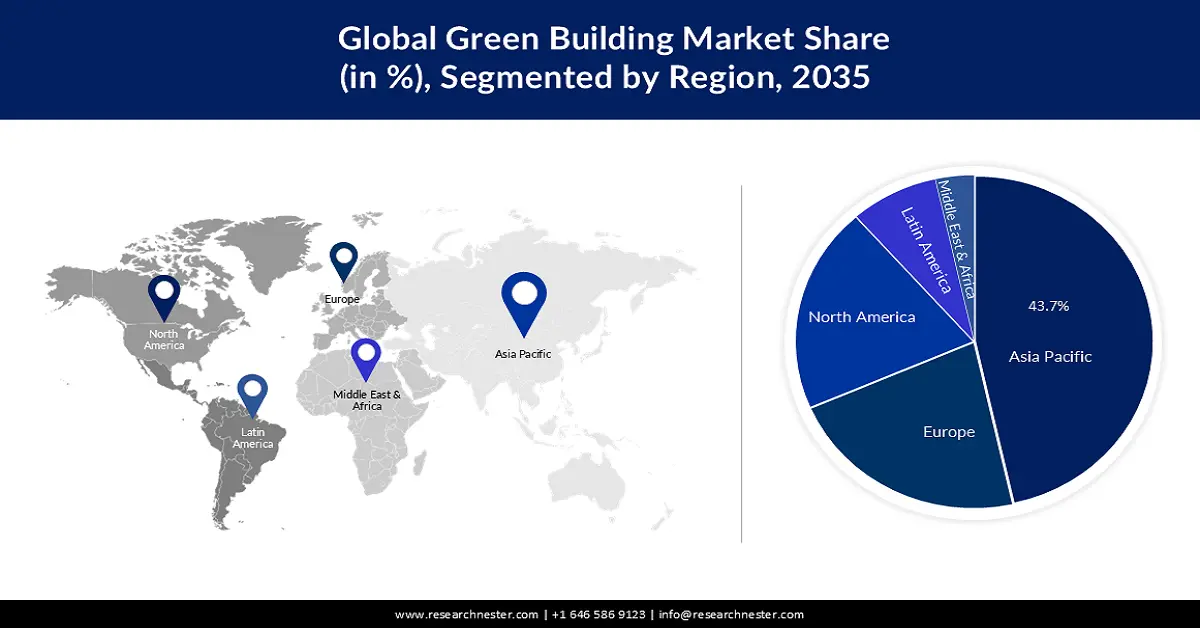Green Building Market Regional Analysis:
North America Market Insights
North America region is likely to observe significant growth till 2035, owing to federal energy efficiency policies, infrastructure spending, and consumer sustainability trends. According to the U.S. Department of Energy, there is an estimated 30% energy saving in buildings when IoT lighting and climate control are adopted. In March 2025, Holcim decided to rebrand its North America operation as Amrize in order to meet the regional decarbonization objectives. The company will prioritize circular materials, digital construction advancements, and carbon net-zero supply chains, garnering market position.
The U.S. is anticipated to observe stable growth during the forecast period owing to its construction and regulation of sustainable markets. Government initiatives and private financing options are driving adoption across the commercial as well as residential sectors. The government’s proactive approach towards climate change and the increased emphasis on corporate sustainability initiatives are set to drive the green building market even further.
Canada is steadily moving towards green building with solid governmental backing and sustainability goals across provinces. In July 2024, the government launched the Canada Green Buildings Strategy with funding for low-carbon construction materials, retrofitting incentives, and skilled workforce training. The program complements Canada’s net-zero initiatives and encourages the country’s provinces to work together toward creating sustainable structures. The strategy is a clear indication of the growing status of Canada as a regional powerhouse in sustainable urban development.
Asia Pacific Market Insights
Asia Pacific green building market is expected to capture revenue share of over 43.7% by 2035, due to increased urbanization, the presence of favorable policies, and increasing investments in green construction. In April 2022, the Ministry of Housing and Urban-Rural Development of China introduced The Code for Building Energy Efficiency and Renewable Energy Utilization, which applies to all building types. This regulation is a first step towards increasing the adoption of green building practices in one of the largest construction industries globally.
China quest for sustainability at the political level remains impactful in the global green building trends. The energy efficiency code requires the use of renewable energy and smart devices in newly constructed and existing buildings. Local authorities are also promoting green infrastructure in the form of incentives to install solar panels, sustainable water systems, and prefabricated modular construction. These policies are consistent with a broader national approach to decarbonizing the construction sector and encouraging circular design practices.
The green building market in India has shown considerable growth over the years owing to factors such as favorable economics, high urban demand, and institutionalization. In March 2024, Green Building Renewables purchased JL Phillips Renewable Energy Ltd to incorporate renewable energy products into green housing schemes. Such developments highlight how energy infrastructure and building systems are integrated into India construction sector, presenting new possibilities for sustainable scale and affordability.


